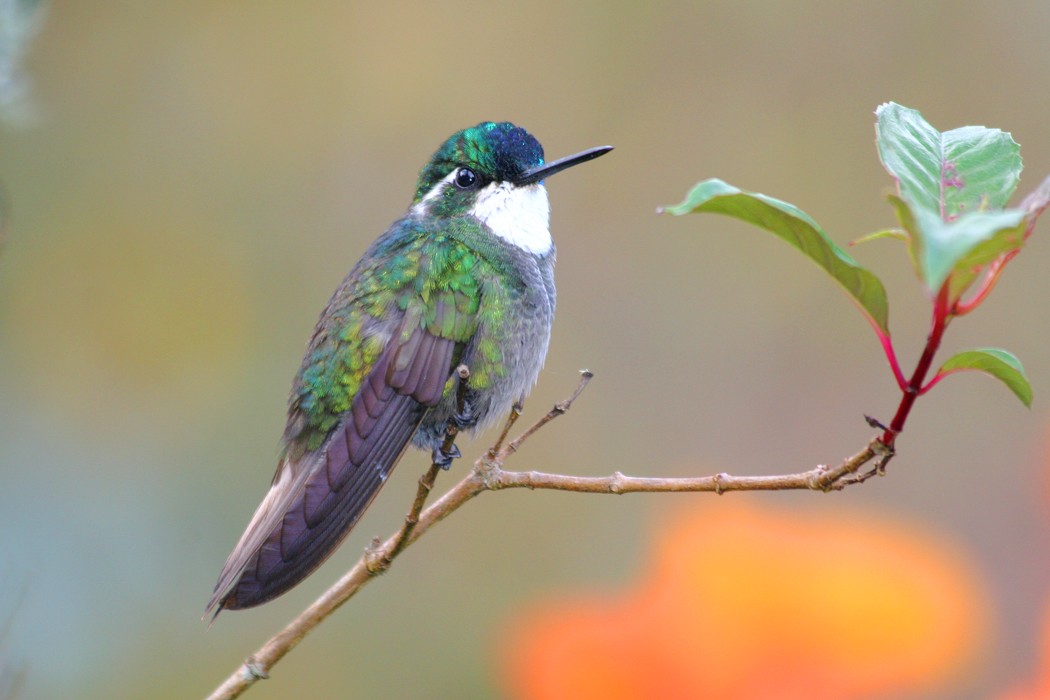White-throated Mountain-gem
A species of Mountaingems Scientific name : Lampornis castaneoventris Genus : Mountaingems
White-throated Mountain-gem, A species of Mountaingems
Botanical name: Lampornis castaneoventris
Genus: Mountaingems
Content
Description General Info
 Photo By Joseph C Boone , used under CC-BY-SA-3.0 /Cropped and compressed from original
Photo By Joseph C Boone , used under CC-BY-SA-3.0 /Cropped and compressed from original Description
The white-throated mountaingem (Lampornis castaneoventris) is a hummingbird which breeds in the mountains of western Panama. It is replaced in southern Costa Rica by the gray-tailed mountaingem, L. cinereicauda (García-Moreno et al., 2006). Another very close relative, the purple-throated mountaingem, is found sympatrically. This bird is 10.5 cm long. The shortish black bill is slightly curved. The adult male has bronze-green upperparts and underparts except for a brilliant green crown, white throat and blue tail. The female lacks the bright crown and throat, and has rich cinnamon underparts. Young birds resemble the female but have buff fringes to the upperparts plumage. The female white-throated mountaingem is entirely responsible for nest building and incubation. She lays two white eggs in a deep plant-fibre cup nest m high in a scrub, small tree or vine. Incubation takes 15–19 days, and fledging another 20–26. The food of this species is nectar, taken from a variety of small flowers, including epiphytic Ericaceae. Like other hummingbirds it also takes small insects as an essential source of protein. Male white-throated mountaingems defend flowers and scrubs in their feeding territories, and are dominant over most other hummingbirds. 
Size
12 cm
Nest Placement
Shrub
Feeding Habits
White-throated Mountain-gem primarily feeds on nectar and small arthropods. It employs hovering and rapid wing flapping to feed from flowers, displaying a preference for specific plant species. Unique adaptations include a specialized tongue for nectar extraction.
Habitat
White-throated Mountain-gem typically resides in highland habitats, frequenting oak forests, forest edges, and shrub clearings. They adapt to regions with significant human presence, often observed in gardens and small settlements near the forest border. This species thrives across broad montane regions, favoring forested environments from lower shrublands to higher canopy levels.
Dite type
Nectivorous
General Info
Feeding Habits
Bird food type
Species Status
Not globally threatened.
Scientific Classification
Phylum
Chordates Class
Birds Order
Swifts and hummingbirds Family
Hummingbirds Genus
Mountaingems Species
White-throated Mountain-gem